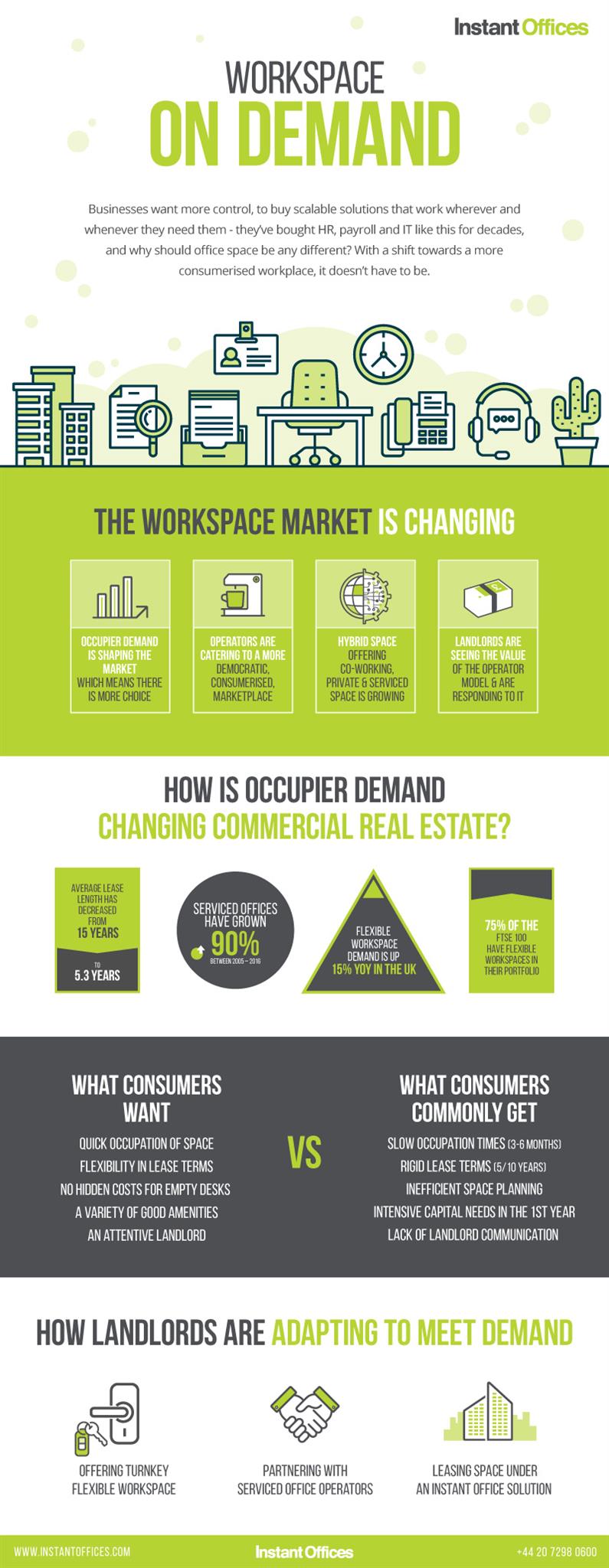In the past 12 months, the global hybrid and co-working office space market has grown an astonishing 18 per cent. That means the market is now twice the size it was back in 2013 and accounts for a third of all flexible space across the world.
But what is driving this growth? John Williams, head of marketing at the Instant Group, believes it could be the growing need for workspace on demand.
Workspace on demand
The idea of ‘Workspace on Demand’ revolves around businesses wanting more control, more flexibility and scalable business strategies that work for them, wherever and whenever they need them. Businesses have been expecting this from their HR, payroll and IT for ages, and are now looking to their properties to deliver the same flexibility.
What is changing in the market?
Occupier demand
According to Beth Hampson, head of sales at LEO, “Buying habits are driving the evolution of the office. Companies are getting used to working on shorter term contracts with their customers and therefore businesses need to be able to tailor their real estate to match”.
Beth’s insight goes some way to explain how the average office lease length has decreased from 15 years to just 5.3 years; as operators observe the customer experience and adjust their offers accordingly.
Provision of hybrid office space
Operators have begun to recognise the trend towards co-working and the availability of private office space that can be supplied at short notice and paid for on a monthly basis.
This is not just a trend seen in SMEs, 75 per cent of FTSE 100 corporations now have flexible workspaces within their portfolio; as they look to take advantage a hybrid space sense of community while retaining some private spaces for meetings and confidential work.
Landlords seeing the value
The serviced office market has grown 90 per cent in ten years, while the flexible workspace market has also grown 15 per cent YoY in London. With that in mind, it is no surprise to see landlords looking to the operator model and the dual role of manager and curator of space, developing long term brand value by driving engagement with occupiers.
Digitisation in the wider property market
The ability to procure and operate workspace through online platforms is easier than ever before; this ease of access has led to more demand for the commercial real estate market to become more service-orientated and to search for these facilities via the web.
Conclusion
In a global economy that has faced many challenges over the past 12 months, the ability to quickly adapt to market changes and to secure short-term space in a new city at short notice is driving demand in the flexible workspace market. And this is a change that has been recognised not only by operators in our market, but by landlords and service providers in the wider property sector.







